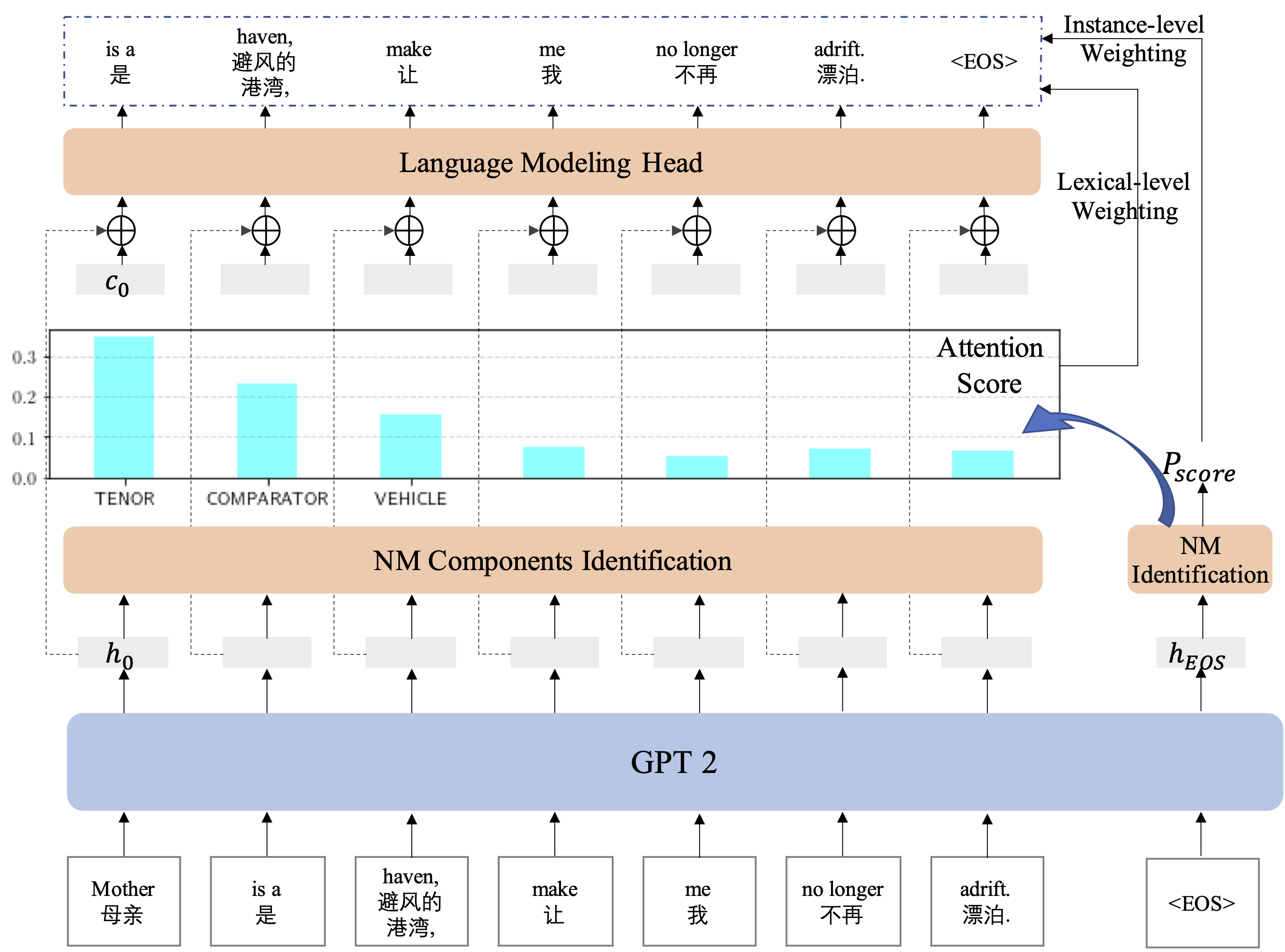Nominal metaphors are frequently used in human language and have been shown to be effective in persuading, expressing emotion, and stimulating interest. This paper tackles the problem of Chinese Nominal Metaphor (NM) generation. We introduce a novel multitask framework, which jointly optimizes three tasks: NM identification, NM component identification, and NM generation. The metaphor identification module is able to perform a self-training procedure, which discovers novel metaphors from a large-scale unlabeled corpus for NM generation. The NM component identification module emphasizes components during training and conditions the generation on these NM components for more coherent results. To train the NM identification and component identification modules, we construct an annotated corpus consisting of 6.3k sentences that contain diverse metaphorical patterns. Automatic metrics show that our method can produce diverse metaphors with good readability, where 92\% of them are novel metaphorical comparisons. Human evaluation shows our model significantly outperforms baselines on consistency and creativity.
翻译:名义隐喻经常用于人类语言,并被证明在说服、表达情感和激发兴趣方面是有效的。本文件处理中国名模代(NM)的问题。我们引入了一个新的多任务框架,共同优化了三项任务:NM识别、NM组成部分识别和NM代。隐喻识别模块能够进行自我培训程序,从大规模无标签的NM一代中发现新的隐喻。NM组成部分识别模块强调在培训和条件中的组成部分,这些组成部分的生成可以取得更加一致的结果。为了培训NM识别和组成部分识别模块,我们建立了一个附加说明的体,由6.3k句组成,包含多种隐喻模式。自动指标显示,我们的方法可以产生多种易读的隐喻,其中92 ⁇ 是新颖的隐喻比较。人类评估显示,我们的模型在一致性和创造性方面大大超出基线。





